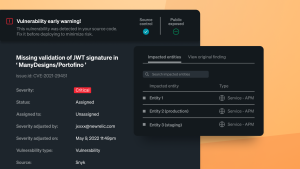Network monitoring is crucial for ensuring the reliability and security of networked systems and applications. By proactively identifying and addressing issues, teams can minimize downtime, optimize network performance, and ensure an optimal customer experience.
New Relic integration with Amazon CloudWatch Network Monitor
New Relic is announcing an integration with the Amazon Web Services (AWS) new active network monitoring service, Amazon CloudWatch Network Monitor, which allows customers to troubleshoot connectivity issues in their hybrid network from AWS to on-premises via AWS Direct Connect (DX). Customers can now easily identify whether a network problem is on-premises or due to the AWS network and quickly take remedial actions.
Amazon CloudWatch Network Monitor is a fully managed AWS service that customers can set up in minutes using Amazon CloudWatch. The monitoring infrastructure will automatically deploy and scale. For more on CloudWatch Network Monitor, see docs here.
Visualizing network metrics with New Relic
You can now visualize metrics on your network health such as packet loss, latency, and Network Health Indicator on New Relic dashboards, alongside your other infrastructure and application monitoring metrics. You can set alert thresholds in New Relic to proactively notify your teams about anomalies, performance degradation, and systems issues and therefore expedite resolution. The integration is available in New Relic Instant Observability, the largest open ecosystem of integrations, tools, and pre-built resources designed to help engineers embrace observability as a daily practice.
These network metrics are streamed to New Relic via our CloudWatch Metric Streams integration. If you have CloudWatch metric streams already configured on an AWS account, then all you need to do is create monitors in AWS and add network paths to monitor your network.
New Relic dashboard showing active network monitoring
Next steps
To monitor Amazon CloudWatch Network Monitor with New Relic, visit our docs, deploy the quickstart dashboard, or sign up for a free account (includes 100 GB/month of free data ingest, one free full-access user, and unlimited free basic users).
The views expressed on this blog are those of the author and do not necessarily reflect the views of New Relic. Any solutions offered by the author are environment-specific and not part of the commercial solutions or support offered by New Relic. Please join us exclusively at the Explorers Hub (discuss.newrelic.com) for questions and support related to this blog post. This blog may contain links to content on third-party sites. By providing such links, New Relic does not adopt, guarantee, approve or endorse the information, views or products available on such sites.




